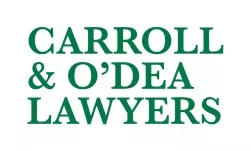- in United States
- with Finance and Tax Executives and Inhouse Counsel
- with readers working within the Environment & Waste Management, Insurance and Law Firm industries
The recent decision of the Personal Injury Commission (PIC) in Nelson v Insurance Australia Limited t/as NRMA Insurance [2025] NSWPICMP 380 is a timely reminder for claimant lawyers about the practical and evidentiary challenges in establishing that a non-threshold injury was caused by a motor vehicle accident. While the legal test of causation may seem straightforward, the decision in Nelson illustrates how difficult it can be to satisfy that test, particularly when the claimant has a complex medical history involving pre-existing conditions. The case also highlights how crucial it is for claimants to provide timely and detailed evidence, particularly in matters involving chronic illnesses or fluctuating disease patterns.
The background
The claimant was involved in a motor accident on 11 June 2023. He alleged injuries to multiple areas of the body, including the cervical spine, thoracic spine, lumbar spine, and abdomen. He also alleged an aggravation of his pre-existing Crohn's disease. The matter came before the PIC as a threshold injury dispute under the Motor Accident Injuries Act 2017 (NSW) (MAIA). The first medical assessor determined that all of the claimant's injuries were threshold injuries within the meaning of the Act. The claimant, however, disagreed and exercised his right to seek a review.
What the Medical Review Panel found
The Medical Review Panel reassessed the claimant's injuries. The Panel ultimately determined that the cervical and lumbar spine injuries were soft tissue in nature and therefore remained threshold injuries under the Act. This aspect of the decision aligns with common practices in PIC jurisprudence, where the differentiation between soft tissue and non-soft tissue injury is often based on imaging or the presence of objective pathology. However, what makes the case notable from a claimant's perspective is the Panel's approach to the reported injuries to the upper back, abdomen, and the aggravation of Crohn's disease.
In relation to the thoracic spine and abdominal region, the Panel found there was no evidence that these parts of the body had been injured in the accident. The claimant did not report pain in these areas at the time of the accident or during his initial medical reviews, and on re-examination, no abnormal findings were recorded. The absence of early complaints and the lack of medical corroboration led the Panel to conclude that no injury had occurred to these regions. From a claimant's perspective, this underscores the importance of documenting the full range of injuries as early as possible, including those that may seem minor at first. What might begin as a mild or intermittent symptom could later develop into something more persistent, but without a clear record of early complaint or treatment, it may be impossible to establish that the injury was causally related to the accident.
The more complex issue in this case concerned the alleged aggravation of Crohn's disease. Crohn's is a chronic inflammatory condition affecting the gastrointestinal tract, characterised by alternating periods of flare-ups and remission. The claimant alleged that the stress and trauma of the accident triggered a relapse of his Crohn's disease approximately one month after the collision. He also submitted that the flare-up led to a significant deterioration in his gastrointestinal health. However, the Review Panel did not accept that the motor accident had caused this flare-up or materially contributed to the aggravation of his condition.
The Panel acknowledged that Crohn's disease is a condition known to fluctuate and that relapses may be spontaneous or triggered by a range of factors, including stress, diet, infections, and medication adherence. The claimant conceded during the proceedings that he had ceased his prescribed treatment for Crohn's disease prior to the accident. This was not the first time he had done so. Medical records revealed a history of disease relapse associated with non-compliance in both 2021 and again in 2024. The Panel also considered that there was no documented trauma to the abdomen at the time of the accident and no significant change in the trajectory of the disease in the weeks immediately following the incident.
Crucially, the Panel found that the contemporaneous evidence did not demonstrate that the course of the claimant's Crohn's disease had been altered or aggravated by the accident. The flare-up in mid-2023, in the Panel's view, was more likely attributable to the claimant's discontinuation of his medication rather than any physical or psychological impact from the collision. On that basis, the Panel concluded that the accident was not a material contributing cause of the condition's progression and therefore declined to address the further legal question of whether Crohn's disease could constitute a threshold injury under the Act.
Why this case is important for claimants
This decision raises important considerations for practitioners who represent claimants with pre-existing chronic conditions. It is not uncommon for trauma, particularly from a motor vehicle accident, to trigger a worsening of symptoms or destabilisation of an underlying condition. However, establishing a causal link between the accident and the exacerbation of the condition requires more than a temporal association. It must be supported by clear, contemporaneous medical evidence and, ideally treating physician opinion that expressly connects the change in condition to the motor vehicle incident.
For claimants with chronic illnesses like Crohn's disease, the decision in Nelson suggests that a proactive and strategic approach to evidence gathering is essential. Where a relapse occurs after a motor accident, treating doctors should be asked to comment not just on the timing of the flare-up, but on whether they consider the accident to have been a contributing factor, and if so, to what extent. Consideration should also be given to the claimant's compliance history and any other known triggers. Otherwise, there is a real risk that the natural variability of the illness will be used to sever the causal chain, as occurred in this case.
Nelson also highlights the fact that the PIC may not deal with legal questions about threshold injury status if it is not satisfied that causation has been established in the first place. This makes the causation enquiry the pivotal point in many threshold injury disputes. If a claimant cannot demonstrate that the motor accident materially contributed to the condition they complain of, the PIC need not engage further with arguments about whether the condition, in substance or character, meets the statutory definition of a non-threshold injury.
Nelson serves as a reminder of the fundamental burden placed on claimants under the MAIA. It is not enough to show that an injury exists or even that symptoms worsened after an accident. The claimant must go further and demonstrate, with evidence, that the motor accident materially contributed to that injury or deterioration. For claimant practitioners, the case reinforces the importance of thorough medical briefing, early documentation of complaints, and clear causation opinion evidence especially when dealing with chronic conditions where alternative explanations may be readily available to the insurer or the PIC.
Please note that this article does not constitute legal advice. If you are seeking professional advice on any legal matters, you can contact Carroll & O'Dea Lawyers on our Contact Page and one of our lawyers will be able to assist you. If you or a loved one have been injured, use our Personal Injury Claim Check now.
The content of this article is intended to provide a general guide to the subject matter. Specialist advice should be sought about your specific circumstances.


